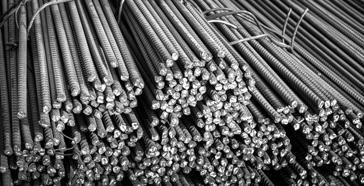TMT bars, or Thermo Mechanically Treated bars, are the backbone of modern construction. Their unique design—featuring a hard outer surface and a soft inner core—is what makes them exceptionally strong, flexible, and safe. But have you ever wondered why TMT bars are engineered this way? The answer lies in the advanced manufacturing process and the demands of modern construction.
The Science Behind the Structure
TMT bars are produced through a carefully controlled thermomechanical process. After the steel billets are heated to high temperatures (around 1100°C), they are passed through a series of rolling mills. While the steel is still hot, it undergoes rapid quenching with water jets. This sudden cooling hardens the outer surface while keeping the core relatively hot. The inner core then cools down gradually in atmospheric conditions, allowing it to form a more ductile structure.
This differential cooling results in a unique metallurgical structure:
-
Outer layer: Martensitic structure – hard and strong
-
Core: Ferrite-pearlite structure – soft and ductile
This combination of hardness and flexibility is what makes TMT bars ideal for modern construction.
Benefits of a Hard Exterior
The hard outer surface of a TMT bar serves several important purposes:
-
High Strength: The martensitic layer formed during quenching provides exceptional tensile strength, enabling TMT bars to bear heavy loads and resist deformation.
-
Better Bonding with Concrete: The rough surface finish of the hard outer layer allows for excellent grip with concrete, ensuring a stronger structural bond.
-
Corrosion Resistance: The hard outer layer also resists corrosion, especially in bars that are additionally treated or coated, increasing durability even in humid or coastal environments.
Importance of a Soft Core
While strength is critical, flexibility is equally important—especially in areas prone to seismic activity. The soft core offers:
-
Ductility: The ferrite-pearlite core allows the bar to bend without breaking. This is crucial for absorbing shock during events like earthquakes.
-
Energy Absorption: During seismic movements, the ductile core helps the bar absorb and dissipate energy, preventing sudden failure and providing time for evacuation.
-
Ease of Fabrication: The soft core also makes it easier to bend and shape the bars during construction, reducing wastage and labor costs.
A Perfect Balance
This dual-structure design—strong on the outside and flexible on the inside—makes TMT bars the ideal choice for reinforced concrete structures. Whether it's a residential building, a high-rise, a bridge, or an industrial plant, TMT bars offer the perfect combination of strength, safety, and longevity.
Why It Matters for You
If you're a builder, contractor, or homeowner, understanding this unique feature of TMT bars can help you make informed decisions. Always look for TMT bars that meet IS standards like IS 1786, as these ensure the bar has been manufactured using proper thermomechanical treatment.
Online steel platforms like Hashtagsteel make it easy to compare and purchase TMT bars from top brands, giving you transparency in pricing, quality assurance, and convenient delivery.
Conclusion
The soft core and hard outer surface of TMT bars are not just a product of advanced metallurgy—they are a smart solution to the demands of modern construction. This engineered structure provides the strength to support towering buildings and the flexibility to withstand nature’s uncertainties. Choosing the right TMT bars means investing in a structure that’s built to last, no matter what.



